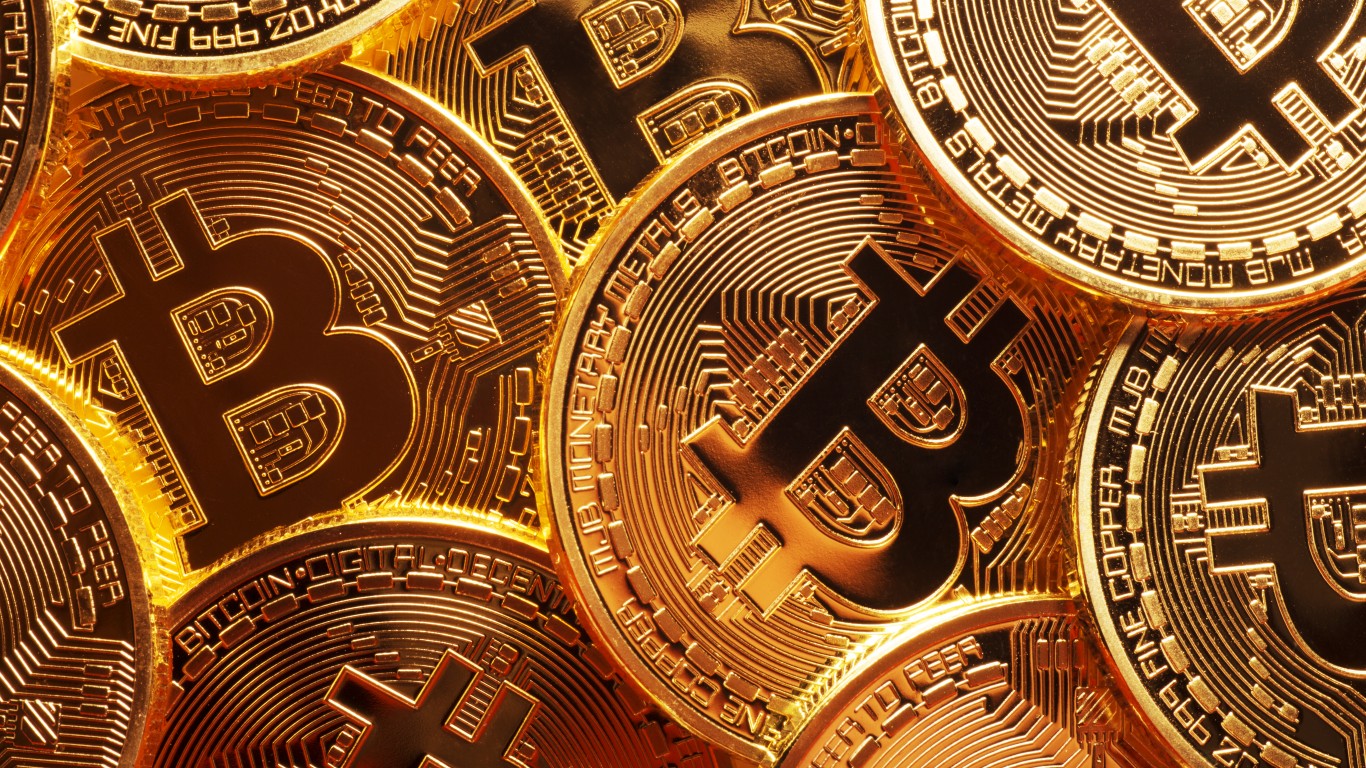
Crypto enthusiasts have long touted bitcoin as digital gold, but an analysis of the cryptocurrency’s performance versus those of other assets shows that it hasn’t really earned that status yet. One thing that’s still lacking is a widespread market perception of crypto assets as a store of value.
Cryptocurrencies remain a minuscule part of the global financial markets, with a total market capitalization of $1.1 trillion as of August, a significant decline from their record market cap of $3 trillion. The crypto markets are only about 2.5% of the total U.S. equity market cap.
However, S&P Global agrees with crypto enthusiasts who are adamant that crypto assets and blockchain technology are here to stay. The firm noted that crypto assets and blockchain technology are an ecosystem with significant differences from the traditional financial system. However, the collapse of TerraUSD shows that the fundamental laws of finance still apply.
For now, one of the greatest debates about cryptocurrencies is whether they should be considered currencies, commodities, securities, or something else entirely. To better understand what crypto assets are, S&P Global compared their performance to that of various traditional financial assets.
Bitcoin Versus Gold
Of course, gold has been a store of value and hedge against market downturns for thousands of years. Central banks use the metal as a reserve asset and to hedge against inflation. When bitcoin was launched, many crypto wonks referred to it as “digital gold.”
As a result, the cryptocurrency has rallied off and on over the years due to expectations that it could play a similar role to the yellow metal at some point.
However, to truly become digital gold, bitcoin would need a strong correlation with the metal’s performance during similar periods, something that hasn’t happened yet. In its recent report on those comparisons, S&P Global explained that crypto assets are significantly more volatile with the prospect of higher returns, making them more of a high-reward asset than a store of value like gold.
For example, data from S&P Global indicates that the gold price rose more than 40% from mid-2019 to mid-2020 as investors turned to the yellow metal for protection during the COVID-19 pandemic. However, bitcoin did not behave the same way during that 12-month period.
Additionally, the gold price has been volatile in 2022 but largely trended upward during this year’s periods of heightened geopolitical risk. Meanwhile, bitcoin’s performance didn’t track the periods of increased geopolitical risk.
S&P Global noted that the bitcoin price has plunged to its lowest level since November 2021, driven by intensifying inflation fears, a clear upward trend in inflation indices, and growing supply chain shortages, energy concerns, and military uncertainty amid the war in Ukraine.
On the other hand, gold rallied during the first quarter but has averaged prices higher than where it stood before the pandemic. S&P Global also found that gold’s volatility aligns closer with that of stablecoins than with other cryptocurrencies.
The firm emphasized that while bitcoin doesn’t currently deserve the classification of digital gold, it could at some point in the future.
Crypto Assets Versus Equities
S&P Global also compared the performances of various crypto assets to those of the S&P 500 and Nasdaq indices. The firm found that the daily returns of crypto assets are much more volatile than equities.
According to S&P Global, cryptocurrency volatility has held heady above 60% since May 2020, while the volatility of the S&P 500’s top three holdings, Apple (NASDAQ:AAPL), Microsoft (NASDAQ:MSFT), and Amazon (NASDAQ:AMZN), didn’t get much higher than 40, putting their volatility closer to that of stablecoins.
While many other reports have called attention to a correlation between bitcoin and equities, S&P Global found that the crypto markets are not significantly correlated with equities despite the uptick in correlation in recent months.
To gauge the correlation between equities and cryptocurrencies, the firm used Apple, Microsoft, and Amazon as proxies for the equity market.
S&P Global did discover that return correlations between bitcoin and the three largest equities increased during the pandemic period from March 2020 to the first quarter of 2022. Other than that, the firm found that correlations remained low.
It feels the lack of comparability between crypto assets and equities is not surprising because the drivers for crypto valuations are different.
According to S&P Global, the key performance drivers of the crypto markets include market confidence and adoption, regulatory frameworks, technology, and supply and demand or liquidity. On the other hand, the firm listed the drivers of traditional financial assets as operating profits, interest rates, inflation, and monetary and fiscal policies.
Cryptocurrencies Versus Each Other
Although S&P Global found that the crypto markets overall do not track equities, it did discover a noteworthy correlation in historical returns with each other, excluding stablecoins. The firm pointed out that the origin story of each cryptocurrency differs from those of the others and that they were created on different platforms using different protocols at different times.
However, S&P Global’s analysis of the performances of various cryptocurrencies shows a moderate-to-high correlation with each other since 2018.
Of course, stablecoins like Tether and USD Coin are far less volatile than other crypto assets. However, S&P Global still discovered that their volatility was greater than that of traditional pegged fiat currencies and that they have a low correlation with them.
This article originally appeared on The Tokenist
Are You Still Paying With a Debit Card?
The average American spends $17,274 on debit cards a year, and it’s a HUGE mistake. First, debit cards don’t have the same fraud protections as credit cards. Once your money is gone, it’s gone. But more importantly you can actually get something back from this spending every time you swipe.
Issuers are handing out wild bonuses right now. With some you can earn up to 5% back on every purchase. That’s like getting a 5% discount on everything you buy!
Our top pick is kind of hard to imagine. Not only does it pay up to 5% back, it also includes a $200 cash back reward in the first six months, a 0% intro APR, and…. $0 annual fee. It’s quite literally free money for any one that uses a card regularly. Click here to learn more!
Flywheel Publishing has partnered with CardRatings to provide coverage of credit card products. Flywheel Publishing and CardRatings may receive a commission from card issuers.
Thank you for reading! Have some feedback for us?
Contact the 24/7 Wall St. editorial team.




